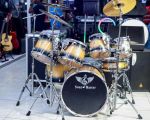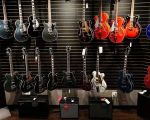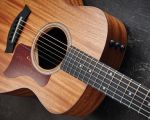How to Produce Music Without Instruments
In the digital age, producing music without traditional instruments is no longer just a dream but a reality for many aspiring musicians and producers. Whether you're an experienced producer looking to expand your toolkit or a complete beginner curious about how to make music without needing guitars, drums, or keyboards, there are numerous ways to create impressive soundscapes. Thanks to advancements in technology and the rise of music production software, it's now possible to compose music from scratch using just a computer and the right software tools.
1. The Evolution of Music Production
Music production has come a long way over the years. Traditionally, musicians and composers relied heavily on physical instruments, recording studios, and expensive equipment to create their music. However, in the 21st century, digital audio workstations (DAWs) and software synthesizers have revolutionized how music is made. Today, it’s possible to create professional-sounding tracks without ever touching a traditional instrument. This has opened up the world of music production to a whole new generation of creatives who don’t have access to expensive instruments or large studio setups.
For instance, many well-known producers now work from home studios equipped with nothing more than a laptop, headphones, and MIDI controllers. These producers use software plugins to simulate the sounds of real instruments and create beats, melodies, and effects. By utilizing these modern tools, anyone with a computer can create high-quality music, making the art of music production more accessible than ever before.
2. Essential Software Tools for Music Production
The foundation of producing music without instruments lies in selecting the right software. There are various tools available to help you craft unique sounds and produce full tracks without needing a physical instrument. Here are some key tools you should consider:
1. Digital Audio Workstations (DAWs) – DAWs are the heart of any modern music production setup. Popular DAWs like Ableton Live, Logic Pro, FL Studio, and Pro Tools allow you to arrange, edit, and mix your tracks. These platforms support audio and MIDI inputs, so you can compose music entirely with virtual instruments and samples.
2. Virtual Instruments – With virtual instruments, you can create anything from piano and strings to electronic synthesizers and percussion. These instruments replicate the sound of real-world instruments but are entirely software-based. For example, you can use plugins like Native Instruments Kontakt or Arturia Analog Lab to mimic the sounds of a wide range of instruments.
3. Loop Libraries and Sample Packs – Samples are pre-recorded sounds that you can use in your tracks. Whether it's a drum loop, a vocal phrase, or a synth melody, these sound snippets are a great way to add texture and depth to your production. Many online platforms offer free and paid sample packs that cater to various genres and styles of music.
3. Utilizing MIDI for Melody and Harmony
One of the most powerful tools in producing music without instruments is MIDI (Musical Instrument Digital Interface). MIDI is a communication protocol that allows electronic devices to interact and control music software. By using a MIDI controller, you can play and record notes in your DAW, triggering virtual instruments to create melodies, harmonies, and rhythms.
Even if you don’t have a background in playing piano or guitar, a MIDI controller allows you to input notes manually, adjust velocities, and experiment with different chord progressions. It’s a versatile way to produce music without traditional instruments while maintaining a high level of musicality and creativity.
4. Creating Beats with Electronic Drums and Loops
Drum sounds are essential to any genre of music. Even if you don’t own a drum kit, you can create professional-sounding beats using electronic drum kits, loop libraries, and software synthesizers. Many DAWs come with built-in drum machines or virtual drum kits that allow you to craft beats digitally. Additionally, sample libraries such as Splice and Loopmasters offer a wealth of drum sounds and loops that you can incorporate into your tracks.
To make your beats stand out, you can experiment with layering multiple drum sounds, adding effects, and adjusting the tempo. This allows you to create unique rhythms that suit your musical style, whether you’re making electronic music, hip-hop, pop, or even rock.
5. Incorporating Vocals Without Using a Microphone
Although singing and recording vocals are often seen as integral parts of music production, it’s possible to incorporate vocals into your music without a traditional microphone setup. If you’re not comfortable with recording your own voice, or you simply don’t have access to a studio, you can use vocal samples or synthesize vocals using software plugins.
For example, you can experiment with pitch correction software like Antares Auto-Tune to manipulate vocal sounds, or use tools like iZotope VocalSynth to create synthetic vocal effects. Alternatively, platforms like Splice offer vocal sample libraries that you can drop into your tracks, adding an authentic or processed vocal presence without ever needing to sing into a microphone.
6. Collaborating with Other Artists Online
Collaborating with other musicians and producers online is one of the most exciting ways to enhance your music production. Platforms like SoundCloud, Bandcamp, and Splice make it easy to share ideas, collaborate on projects, and get feedback from other creatives. By using online tools, you can partner with instrumentalists, vocalists, and other producers from anywhere in the world to help bring your musical vision to life.
Collaboration is not limited to just sharing files; many online platforms allow you to work on tracks in real-time, adjust mix elements together, and create something unique and innovative. Whether you’re working with a DJ on an EDM track or a vocalist on a pop song, the opportunities to collaborate online have revolutionized music production.
7. Where to Find Tools and Resources for Music Production
If you’re serious about producing music without traditional instruments, you’ll need to have access to the right tools and resources. Fortunately, there are many platforms that offer tutorials, sample libraries, and music production software that can help you start your journey. Websites like Beat Trigger offer essential tools and services tailored to the needs of music producers at every level, whether you're just starting or are looking to refine your production skills.
By investing in high-quality software, virtual instruments, and learning resources, you’ll be well on your way to producing music without instruments. And with countless online communities and collaboration platforms, you can quickly expand your network and gain new insights from others in the music production world.








